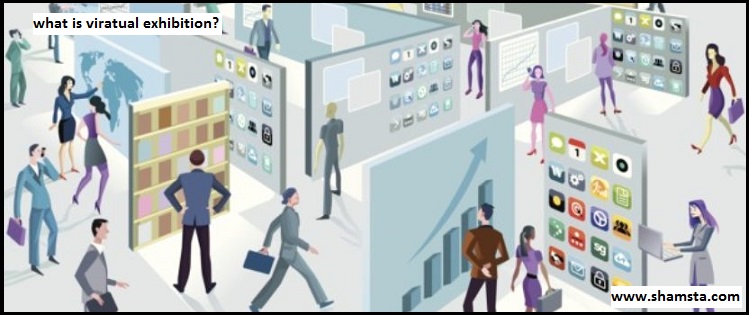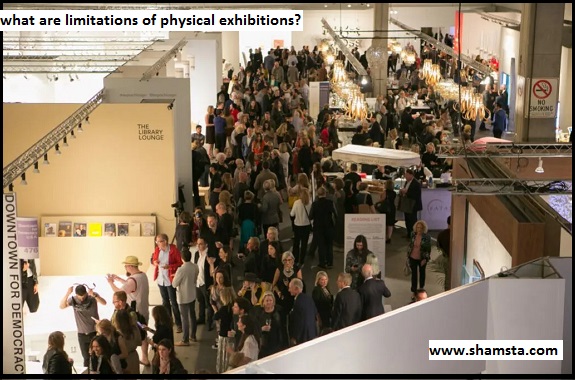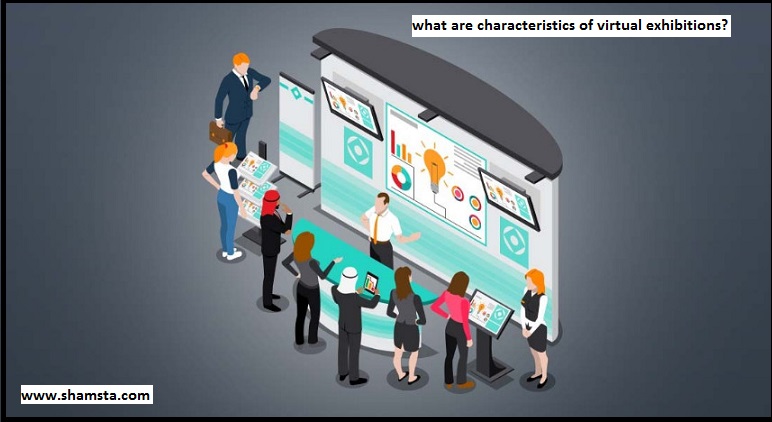
A virtual exhibition is an online platform that provides an immersive and interactive experience for participants to showcase their products, services, or ideas. It simulates a physical exhibition space, allowing attendees to virtually navigate through various sections and interact with exhibitors through live chats, webinars, or video calls. Virtual exhibitions have become increasingly popular due to their convenience, cost-effectiveness, and ability to reach a global audience. They also offer a range of features and tools, such as data analytics and lead generation, that can help exhibitors measure their success and ROI.
what you will read in this article about virtual exhibition:
- ? what is the meaninng of exhibition
- ? why do we need an exhibition?
- ? what is physical exhibition?
- ? what are limitations of physical exhibition?
- ? why do companies move from physical exhibition to virtual?
- ? what does virtual exhibition mean?
- ? what are perposes of virtual exhibition?
- ? what are characteristics of virtual exhibitions?

Exhibitions are public display of industrial or commercial products or artifacts. It can also be defined essentially as a promotional event that is designed to communicate with the targeted audiences some form of information, products or services.
The primary objective of an exhibition is to provide a communication opportunity for achieving marketing objectives, mostly involving buyer and seller transactions. Visitors attend exhibitions for various reasons such as to see new products and developments; obtain product and technical information; talk with and compare potential suppliers, gain new ideas and information; find suppliers for whom they can become distributors, and for social reasons. Exhibitions serve to maximum exploitation of events and occasions, reach-out to the desired audience, opportunities to create a dialogue with its target audiences on a personal basis, and achievement of communications objectives for a wide range of organizations.
Physical exhibitions are found in traditional museums where the line of communication is direct and the custodian of a collection communicates directly with the visitors. These exhibitions have to employ much precise means to reach so many different types of visitors. Physical museums have been a source of traditional information, drawing and interpreting their collections in carefully designed architectural spaces for their visitors like schools, public, tourists, scholars. There are a number of factors normally considered in actual traditional exhibitions. These include creating booths, customs procedures for the movement of works of art, design of exhibition space, insurance policies, transportation time for works of art, fixed hours of operation, and number of visitors that can be handled simultaneously.
The limitations of physical exhibitions lie in their size and bulk. Although they have some degree of mobility, they are in a fixed location for most of the time. This limits the demographic reach of their target audience, while students in one area are viewing the exhibition, their counterparts in other areas have to wait for the exhibition to be unpacked, moved and re-installed at their respective sites-processes that are expensive in terms of costs, manpower and time. Besides, physical exhibitions need extensive efforts to implement the ideas in addition to facing a few constraints like manpower-heavy operations, costs and space. Every initiative has to be planned in advance and suffers from many limitations in terms of space and reachable audience. Furthermore, physical exhibition space can never provide as much information as the virtual space of the Internet. Static representations are not efficient for portraying real life events, as we need to provide dynamism and interactivity of artifacts and services. Moreover, these exhibitions are open to public access at certain times of the day only, being manned by humans, with their limited working hours. Visitors have to visit the exhibition site in person to gather information.

The move from physical to virtual form of exhibition is not a new experience. Many Institutions or organizations are now moving from the tiring and more expensive physical exhibitions to the less costly and easily operated virtual exhibitions.
Virtual exhibition is the collection of digital replicas of real events or objects developed with the help of multimedia and virtual reality tools which produce a simulated environment in a computer, and delivered through web so that users will get the same satisfaction as they are seeing or using the physical objects in different areas. The difference between online and virtual exhibition is marginal. All virtual exhibitions are online exhibitions but not vice versa. Normally all virtual exhibitions will provide a simulated real environment using virtual reality tools which is a bit more difficult, expensive and time consuming to develop than a simple online exhibition. Unlike traditional exhibitions, these exhibitions could be viewed free of cost, at own convenience and in own time zone.
Virtual exhibition places the artifacts in a natural-looking setting and may offer a much more realistic and entertaining experience places the artifacts in a natural-looking setting and may offer a much more realistic and entertaining experience. Virtual exhibition serves as a means to overcome the limitations of the physical space and to provide a vivid experience to remote visitors.
In order to deliver innovative presentations of a concept, and allowing in a great measure the user interaction, virtual exhibition has the following characteristics;

Localization : this means to put the user or visitor in the context and making him familiar with the cultural elements presented
Relevance : relevance is an important characteristic in order to attract many visitors to access it and to be attracted about it
Interaction : Interaction here means to give users the possibility to interact with the application rendering the virtual exhibition, for example to make zoom on a picture or to select something in order to get detailed description.
Maintainability : It means the possibility to being updated every time when new elements appears and must be added to the gallery or when the creators want to enrich the descriptions or correct them.
Accessibility : Accessibility means to reach audiences that the physical exhibition never could attend.